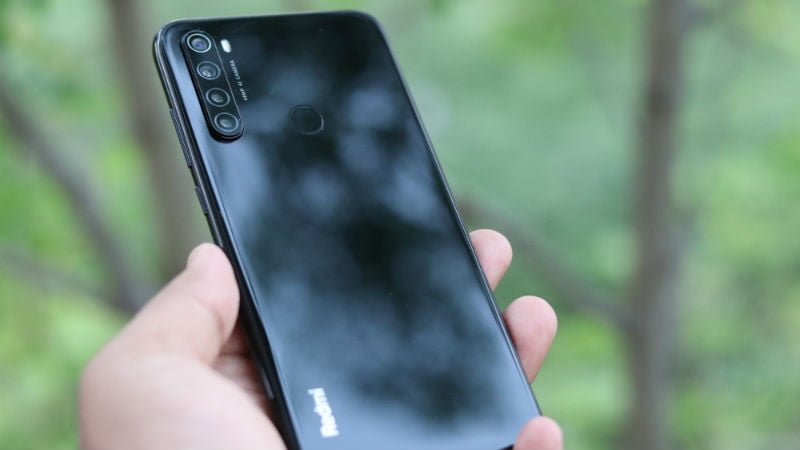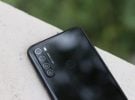Whenever there is a talk about budget smartphones in any conversation, a sentence cannot be completed without the mention of Xiaomi. The Chinese smartphone manufacturer has become synonymous with budget smartphones in the industry, and this year has been special for the company given how many phones it has launched in this price range. One of the latest debuts amongst this is the Redmi Note 8 which carries a lot of responsibility on its shoulder since it comes with the ‘Note’ tag. Now, the Redmi Note 8 Pro has already proved its prowess and how much it packs in terms of capabilities, but the question looms in the head of the buyers, whether or not the Redmi Note 8 would be able to live up to the expectations given its lighter price tag of Rs 9,999. Not only this, but the phone also comes with another variant priced at Rs 12,999, thus putting its foot on both the sands.

Key highlights of the Redmi Note 8 include 48MP quad-camera setup, Full HD+ display, 4000mAh battery with 18W fast charger inside the retail box and the 4GB RAM variant is priced at Rs 9,999. I have been using the Redmi Note 8 as my primary device for more than a week. So, to make it easier for you, here is a review of the Redmi Note 8 in detail.
Xiaomi Redmi Note 8 Review: Design and Display
When it comes to design, if you imagine a representation of the Redmi Note 8 Pro for this device, then it is likely that you would be met with a harsh truth. We say this because the Redmi Note 8 is less of a toned-down version of the Pro variant and more of a step up from the previous generation device. On the front, the Redmi Note 8 bears a slightly dated design with a chin which juts out too far on the bottom. Also, the side rim on the phone which runs the entire length covering the buttons doesn’t really help the aesthetics. In short, the Redmi Note 8 does not look like the Redmi Note 8 Pro, instead, it resembles the Redmi Note 7 and Note 7S a lot.
https://www.youtube.com/watch?v=Je136-iykpI
The screen measures a 6.3-inches, and it comes with a waterdrop notch. On the rear panel, the camera setup is placed on one side, and it is quite bumpy, which becomes more apparent when you place the phone on a flat surface.
With this being said, the rear panel on the Redmi Note 8 does give out a good shine with some appreciable hues thus attracting some attention. But since the phone comes with a glass coating which is actually the Gorilla Glass 5, it is prone to smudges and fingerprints. The Black colour variant which we have with us shows attracts fingerprints with just one touch. Xiaomi also claims of the P2i coating on this device which will make it splash resistant. As for other aspects, the device has a 3.5mm headphone jack and USB Type-C port on the bottom, volume rockers and power button on the right side, followed the SIM card tray on the left. The fingerprint sensor is placed on the middle of the rear panel and it gets the job done.
The display on the Redmi Note 8 is a 6.3-inch Full HD+ IPS one and it gets the job done. While you actually turn on the phone, you will see that the Full HD+ display comes with a crisp touch to it and it is pleasant to look at although it could be a little more vibrant. It does not have HDR support like its elder sibling, but the IPS panel renders accurate colours and decent viewing angles. Since it's a reflective panel, you may face difficulties with viewing angles, but besides that, the screen on the Redmi Note 8 is on point.

Xiaomi Redmi Note 8 Review: Performance and Software
The Redmi Note 8 comes powered by the Qualcomm Snapdragon 665 chipset which is a step up from the Snapdragon 660 SoC we get on the Redmi Note 7 and Note 7S smartphones. The Note 8 is available in two variants- 4GB+64GB and 6GB+128GB, along with a dedicated microSD card slot for storage expansion. Similar to other Xiaomi phones, the Redmi Note 8 also runs MIUI 10 out of the box and it's based on Android 9 Pie.
MIUI on the device also soared well given the 6GB of RAM and the Octa-Core Snapdragon 665 SoC. There were no lags whatsoever while using the device and flipping between applications. Also while playing the PUBG Mobile on the phone with the settings turned to low, the game did not stutter. Although it should be noted that the phone does get pretty warm while you do heavy gaming on it.
The audio output on the Redmi Note 8 also remains at par considering the price of the phone. As for the battery of the Redmi Note 8, the phone comes with a 4000mAh piece with 18W fast charger which should be enough to get you by the entire day. Unlike the Redmi Note 8 Pro, the Redmi Note 8 delivers good battery life because the chipset is not a power-intensive one. The phone managed to offer around six and a half hours of screen-on time with every single charge. The charging speeds are not the fastest, but it's the best you get in the price range.
The software experience is also pretty decent with features like Dark Mode, Reading Mode and so on. The phone will receive MIUI 11 update at the end of November 2019 and it's ahead of the Redmi Note 8 Pro when it comes to receiving the MIUI 11 stable build.
Xiaomi Redmi Note 8 Review: Cameras
For two years now, Xiaomi remained undefeated in the camera segment under Rs 15,000 with the Redmi Note Pro devices like the Note 5 Pro, Note 6 Pro, Note 7 Pro and the Note 8 Pro. But the company wants to be the leader in under Rs 10,000 price point when it comes to cameras as well and the first attempt at the same is the Redmi Note 8.
On the camera front, the Redmi Note 8 features a quad-camera setup with a 48MP f/1.79 sensor, an f/2.2 aperture 8MP wide-angle lens, and there is a 2MP depth sensor and a 2MP macro sensor as well. While actually shooting the images, the final result turned out to be good owing to the 48MP sensor which captures details really well. The 48MP sensor used by Xiaomi is the same Samsung ISOCELL GM1 which we earlier saw on the Redmi Note 7S and it's not the Samsung GM2 sensor. There's a dedicated 48MP mode which helps in capturing images with better details and dynamic range.
But, as usual, the MIUI camera app is a little hard to get around with. There's one major issue which is worth mentioning; Occasionally, you might struggle to find focus on a particular point, especially with the moving objects. For example, if you're trying to capture a flower but there's a slight wind in the backdrop, so the camera app struggles to focus. But when it focusses on the object, the resulting image comes out really good.
The quality does get a bit underwhelming with the wide-angle lens, and the macro lens seems to be a good addition for someone looking to experiment with close up shots. Portrait shots on the Redmi Note 8 also come out good. Overall, the Redmi Note 8 is an upgrade to the Redmi Note 7S in terms of versatility as the primary camera offers identical performance to its predecessor.
As for videos, the phone goes as high as recording 30fps in 4K and 60fps in 1080p. The quality of the videos is also on the decent side, but nothing spectacular.
Xiaomi Redmi Note 8 Review: Other Noteworthy Features
The Redmi Note 8 features an IR Blaster which allows users to control their TVs or DTH Set-Top Boxes or ACs or any other product that has an Infrared Sensor. The phone also has a USB Type-C port, something which all the phones in the Redmi 8 series offer right now. The Redmi 8A and Redmi 8 also has a USB Type-C port and 18W fast charging support. Xiaomi is also bundling an 18W fast charger inside the retail box this year which is another addition.
Xiaomi Redmi Note 8 Review: Verdict
To sum up things, the Redmi Note 8 is a pretty good offering, and it especially fares well when placed in front of the competition like the Realme 5 and the Vivo U10. The phone does give a better screen, RAM and memory, which become the plus point for this offering by Xiaomi. So when it comes to pure value, the Redmi Note 8 has got many reasons stacked in its favour.
It's a master move from Xiaomi to offer 4GB of RAM and 64GB of storage with the base variant and that too at Rs 9,999.






































